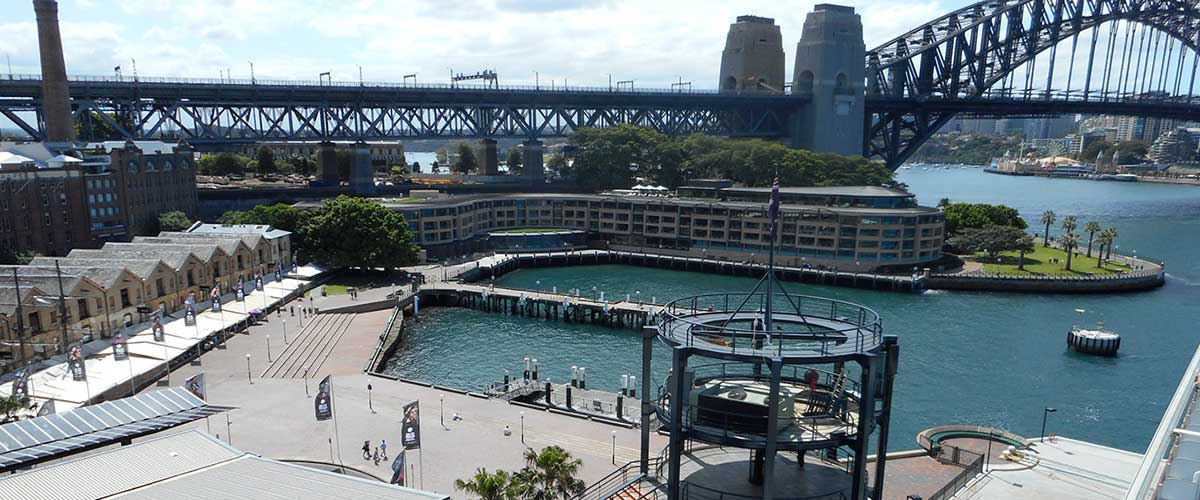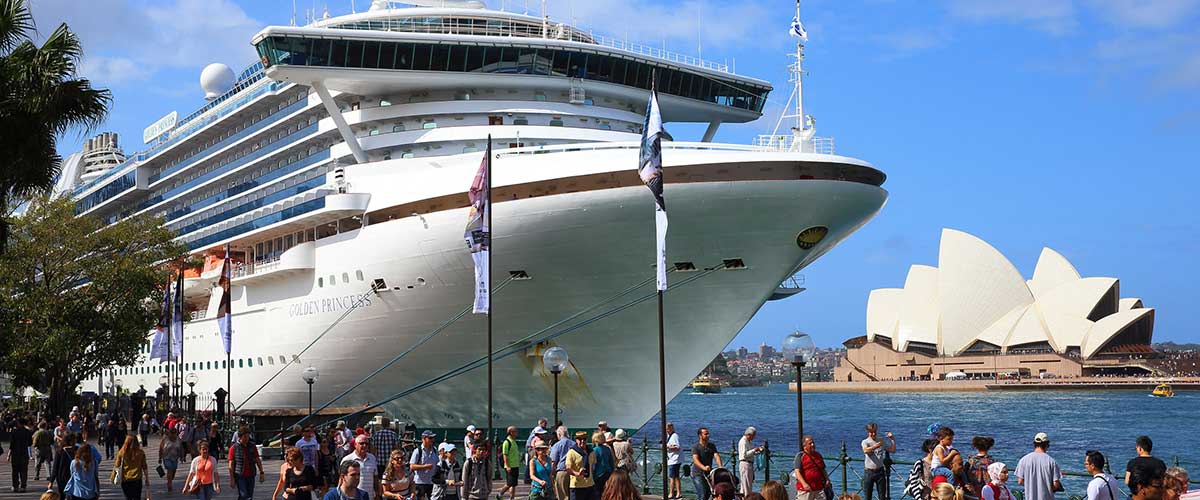Visit Sydney Australia
Inner City Areas: Sydney Cove and The Rocks | Central | Southern | Darling Harbour

West Circular Quay
Sydney Cove, on which Circular Quay is built, is one of the most significant places in Australia's history as it was here, on 26th January 1788, upon the arrival of a fleet of convict ships from England, that the Colony of New South Wales was founded. From it, not only the State of New South Wales, but also the City of Sydney and the nation of contemporary Australia grew to become what they are today. In early colonial days, Sydney Cove was the hub of transport and communications for the fledgling settlement. The Cove has maintained that role to the present day, as it is from here that ferries, trains and buses provide access to the many attractions in Sydney and the surrounding region.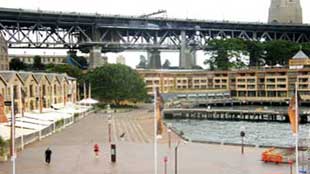
The cove's name recalls Robert Campbell, a prominent Scottish merchant in the early days of Sydney, purchased this land in 1799. Commonly known as the father of Australian commerce, he constructed a private wharf to house imports such as sugar, tea, and spirits from India. From 1838, he began construction of 5 sandstone bays (Campbell Storehouses) which are still standing to this day. Pullies that were used to hoist cargoes can still be seen on the upper levels of the warehouses.
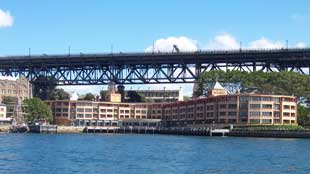
When this former industrial site (maritime warehouses) was being considered for redevelopment in the late 1980s, the Government put stringent conditions on the developers to ensure that the view of the Harbour Bridge was not impeded from Circular Quay and that the new structure blended into the environment. The architect's solution was to create a simple, Post-Modern, ribbon-shaped hotel to fill the corner of Campbells Cove, an objective achieved with remarkable success. 7 Hickson Road.

The Museum of Contemporary Art Australia (MCA) is Australia's leading museum dedicated to exhibiting, interpreting and collecting contemporary art from across Australia and around the world. The MCA Store is one of Sydney's unique shopping destinations.
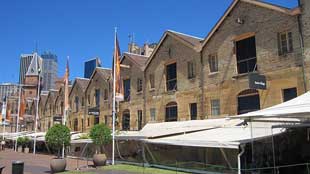
The handsome sandstone bond stores on Campbells Cove were built by the sons of pioneer merchant Robert Campbell to house the tea, coffee, sugar, spirits and cloth their family business imported from India. Campbell Snr. began trade with the colony in 1798, taking up residence in 1800 and leading the way for free enterprise in Sydney.
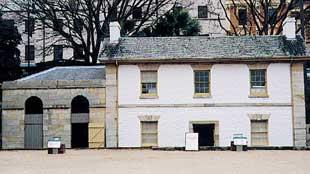
Built in 1816 as a barracks for the crew of the Governor's boats, it became the home of the Governor's coxswain, John Cadman, and his wife Elizabeth. Cadman was transported to Sydney on the second fleet for horse stealing. It is the oldest dwelling in the inner city area. He showed such skill with boats that, after being fully pardoned in 1821, he was placed in charge of the Governor's fleet of 20 boats. Cadman's restored cottage is now a National Parks and Wildlife Information Centre.
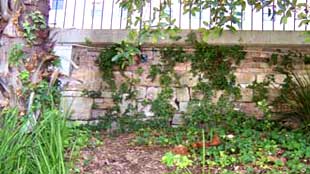
A 3-metre high stone retaining wall was built by Gov. Macquarie along the eastern side of George Street during the early years of his Governorship. Once part of the retaining wall behind the Government Dock Yard, the small section of it which survives is visible behind Cadman's Cottage. The stone for the wall was quarried on site. The dockyard operated from 1788 until 1833, for the greater part under master boat builder Thomas Moore.

The site of early colonial fortifications (some are still there and on display) and Australia's first observatory, Dawes Point is a popular place to sit on the grass and watch ships come ond go, as well as view the Harbour Bridge and its approaches from an unusual perspective - underneath.

This terminal was built to provide better accommodation for the many larger passenger ships being built after World War II which brought thousands of migrants to Australia from Europe. By the time it was completed, the move away from sea to air travel had already begun and ironically, the first ship to use the terminal was the cruise liner, SS Oriana. The terminal was rebuilt on a smaller scale in 1988. Its new, stark look was tempered in another refit prior to the Sydney 2000 Olympic Games. It was expanded and refitted again in 2015.
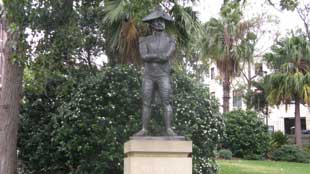
This leafy garden, which commemorates the arrival of the First Fleet of British convicts to Australia who landed near here in 1788, is a popular lunchtime spot for local office workers. It was here that in 1788 Sydney's first wharf, a primitive log structure, was built. A path led from it to the hospital in The Rocks, giving rise to it being called the Hospital Wharf. It was replaced in 1813 by the King's Wharf. This wharf was removed in 1855 when the Seawall of Circular Quay was built.
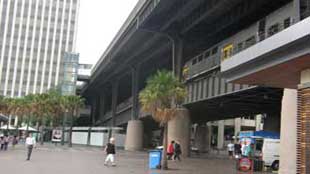
Completed in 1957), the Cahill Expressway was Sydney's first freeway. It is that part of the southern approaches to the Sydney Harbour Bridge which directs traffic off and onto the bridge to and from the eastern sector of the CBD via a raised roadway on the top deck of a two level steel structure across the front of Circular Quay. The twin lines of the City Circle railway and Circular Quay station occupy the middle level of the structure, the Circular Quay ferry terminals and shops are located on the ground floor level.

A walkway across the front of Circular Quay on the footpath of the Cahill Expressway. It commences in The Rocks, and offers commanding views of the Sydney Cove. The walkway can also be accessed by a lift on Circular Quay near the foot of Phillip Street or from Macquarie Street.

Work commenced in 1841, first on the eastern side and later on the western and southern sides (1854) after reclamation of the mudflats had been completed. It was the last major public work to utilise convict labour. Rubble from the Argyle Cut which was being carved out of the hillsides of the Rocks was used as fill behind the stone retaining wall, an area of just under a hectare. The wall was cut from rock quarried on Cockatoo Island and brought to the site by boat. It remains intact today, though parts of it are covered by wharves and concrete.




